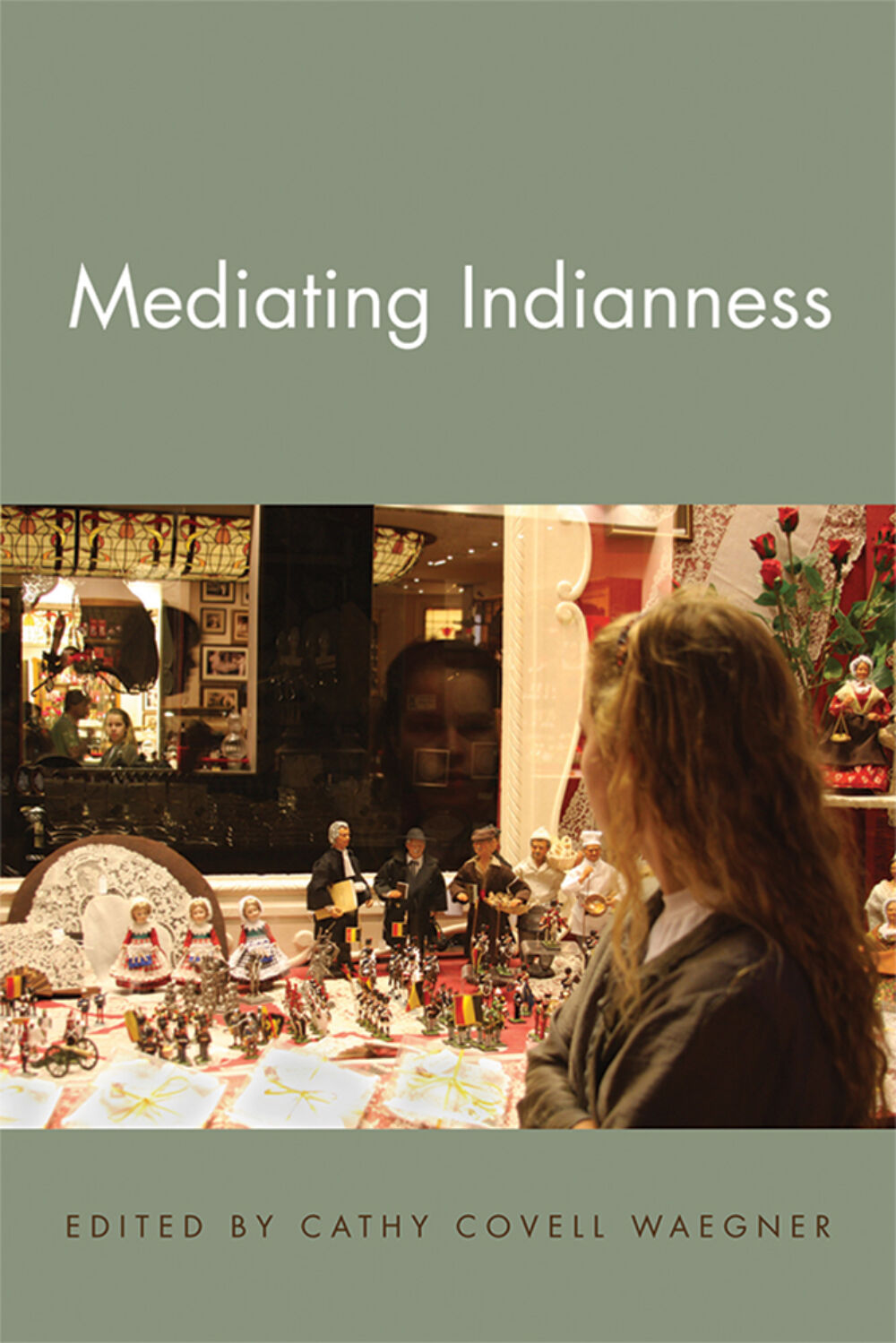So, Cathy, tell us the backstory of the volume.
The academic organization MESEA (“Multi-Ethnic Studies: Europe and the Americas”) hosted an international conference in Barcelona in June 2012 with the theme of “Media and Mediated Performances of Ethnicity.” I organized a four-part interdisciplinary panel called “Mediating Indianness” in which contributions by European and (Native) American, junior and senior scholars and writers were presented or performed.

We were pleased when Michigan State University Press accepted the collection of papers and texts for its American Indian Series (general editor Gordon Henry Jr.).
MSU Press’s co-publication agreement with University of Manitoba Press felicitously led to the release of Mediating Indianness in Canada. Canadian readers will perhaps especially appreciate the Anishinaabe and Haudenosaunee components.
The word “Indianness” frequently has a negative connotation, meaning a standardized, essentialized notion of the Native American. Why did you choose this term?
The term certainly points to the construction of ethnicity as filtered through a network of media. This construction can serve to promote disparate agendas. Many such constructions are damaging in today’s view, such as the “Indian” that the boarding school policy sought to destroy in generations of Native children or the ubiquitous “redface Indian” of Hollywood cinema. Although our volume refers to these, we emphasize the active and creative constructions by Native Americans themselves, which can expose and counter static, limiting, and derogatory stereotyping.
What role does a transatlantic perspective play in your book?
MESEA encourages scholarly attention to the interactions among European and American cultural phenomena. The cover photo of Mediating Indianness was taken by Native American Kimberly Blaeser during her trip to Europe to attend the MESEA conference in Barcelona; the photo is titled “Indigenous Indices of Refraction, Brussels 2012.” As I describe in the beginning of the volume’s Preface, this picture provides a fascinating case study of the ways historical, experienced, fixed, and perceived lenses of Indigeneous identity constantly refract and connect on both sides of the Atlantic and beyond. Chris LaLonde’s study of Native American participation in the global hip hop presence reflects these lenses, for instance. My own contribution to the volume demonstrates this in an investigation of Buffalo Bill’s wildly popular but now infamous Wild West and its representation in twenty- and twenty-first century films and plays, in which the so-called Show Indians were able to empower themselves through certain transcultural strategies.
On a meta-level, sophisticated, largely European postmodern theory can provide a means to approach Native American literature, as A. Robert Lee proves in his chapter. Lee also reviews Gerald Vizenor’s latest novel, Blue Ravens, which deals with the generation of young Native Americans who traveled across the ocean to fight on the World War I battlefields of France; the two protagonists, an artist and a writer, are deeply influenced by the international movement of Modernism and choose to return to Paris.
Thus, with regard to contributors, genesis, transcultural phenomenon of our analysis, application of theory, and content we aim for a transatlantic perspective. In fact, I would have liked to subtitle the volume “Transatlantic Refractions”!
What is new about Mediating Indianness ?
First of all, the spectrum of “media instruments” is strikingly broad; one might not immediately think of, for example, “treaty rhetoric” or “alphabetization” or “ritual dance performance” as media – but Billy J. Stratton, Ellen Cushman, and Sally McBeth do so valuably in their respective chapters. The nineteenth-century autobiography of a slave who successfully remediates himself as a Choctaw chief’s son (Sonja’s Georgi’s chapter) unexpectedly shares common denominators with Eric Gansworth’s current theatrical productions featuring complex Indigenous symbols and transmedial high-jinks (chapters by Nicholle Dragone and John Purdy).
Naturally the expected media like films are included in our explorations, as in the contributions by Christine Plicht (“Dead Man Revisited”) and Ludmila Martanovschi (“Mediating the Native Gaze in Chris Eyre’s Films”). Also, attention is paid to the increasing implementation of the newest electronic media and (social) networks – to organize the Ute Bear Dance or to promote the controversial “Buffalo Bill Show Indians” as life-size cutouts on California beaches.
My preface contains a selective update on recent scholarship relating to relevant mediation.
Can you mention some highlights in the book?
Of course every chapter is a highlight for me! In addition to the chapters already mentioned above, I could point out Kerstin Schmidt’s stunning analysis of Minda Martin’s experimental documentary film called Free Land. In her “Native Photography and Visions of Light,” Kimberly Blaeser, the Wisconsin Poet Laureate for 2015-16, develops a new theory of Indigenous photography, which she illustrates with her own work, including the new genre of “pictopoems.”
The fine poems by Evelina Lucero and Jane Haladay, as well as the climactic chapter ”Crow Commons; Creative Correspondence and Virtual Affiliations” (Kim Blaeser, Jane Haladay, Gordon Henry Jr., Molly McGlennen, Jesse Peters) that was highly praised when performed in Barcelona, add an important component of academic-creative writing not usual in conference volumes.
References to Gerald Vizenor’s influential theories and work are woven into the fabric of the entire book, and it is very fitting that his “Envoy,” an original poem responding to “Crow Commons,” concludes the volume. Indeed, Mediating Indianness is dedicated to the “consummate storier” Gerald Vizenor!
Cathy Covell Waegner taught in the English Department of the University of Siegen in Germany until her retirement in July 2013. Her current research focuses on constructions of Indigeneity.
Posted by U of M Press
March 2, 2015
Categorized as Author Posts
Tagged aboriginal, art, biography, books, ethnic, history, identity, indigenous, literature, media, native american, photography, politics
Saskatoon SBA Announcement Happy International Women's Day from UMP!
